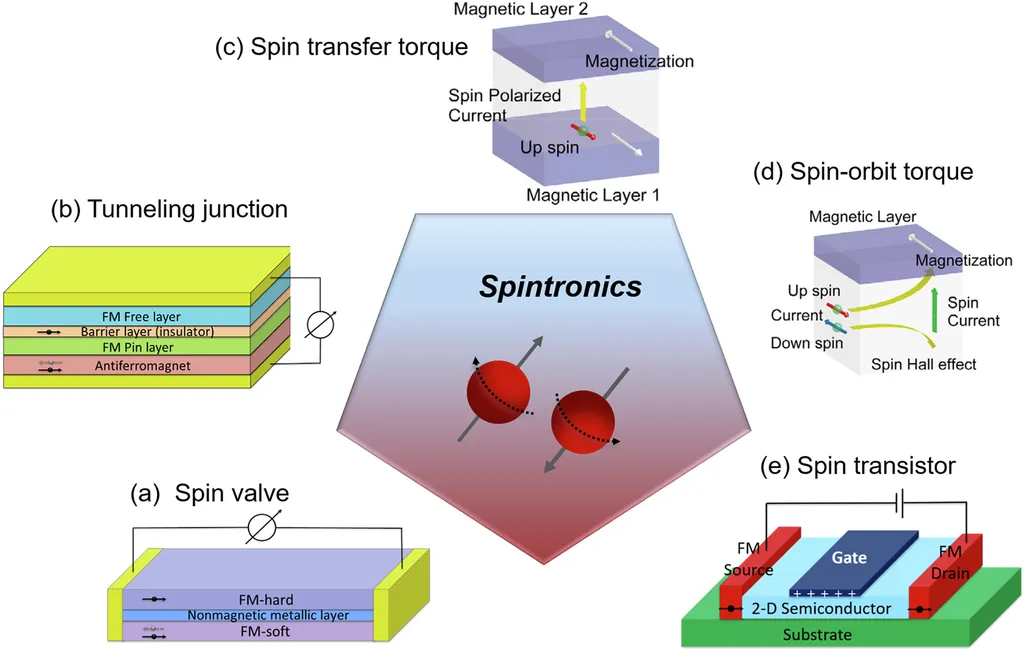In a significant stride towards advancing spin-based electronic devices, researchers have demonstrated the potential of Fe-doped ZnO (Fe-ZnO) as an oxide-dilute magnetic semiconductor (oxide-DMS) in exchange bias nanostructures. This breakthrough, published in the journal *Materials Research Express* (which translates to *Materials Research Express* in English), could pave the way for more efficient spintronic devices, with profound implications for the energy sector.
The study, led by Dr. V. Mihalache from the National Institute of Materials Physics in Magurele, Romania, focuses on the exchange biasing of oxide-DMSs, a critical aspect for spin-based electronic devices. Traditionally, exchange coupling in these systems occurs between secondary phases, excluding the oxide-DMS. However, Mihalache’s research presents compelling evidence that Fe-ZnO can indeed participate as a ferromagnetic (FM) component in the exchange bias (EB) of the ZnFeO system.
The researchers synthesized ZnFeO nanostructured systems with a 2 atomic percent iron concentration. They processed these systems by decomposing Zn-Fe-propionates and annealing them in an Ar-5%H₂ atmosphere at temperatures ranging from 480 °C to 510 °C and times between 60 and 100 minutes. The magnetization investigations revealed the coexistence of an FM phase with a Curie temperature above 300 K, an antiferromagnetic phase with a Neel transition at about 200 K, and a disordered spin-glass-like phase with a transition at about 50 K.
All samples exhibited the exchange bias effect, characterized by high and low EB blocking temperatures at approximately 200 K and 50 K, respectively. Mihalache explained, “The analysis of our experimental data provides strong evidence for the exchange biasing of Fe-ZnO (oxide-DMS) by the FeO (antiferromagnetic) phase and/or the spin-glass phase.”
The implications of this research are substantial for the energy sector. Spintronic devices, which exploit the intrinsic spin of electrons rather than their charge, promise to revolutionize data storage and processing. By improving the efficiency of injecting highly spin-polarized currents, this research could lead to the development of new materials, such as ferromagnetic electrodes, enhancing the performance of spintronic devices and increasing their operating temperatures.
As Mihalache noted, “This work opens up new avenues for developing advanced materials that can significantly impact the energy sector by enabling more efficient and robust spintronic devices.” The study not only advances our understanding of exchange biasing in oxide-DMSs but also sets the stage for future innovations in spin-based electronics, potentially transforming how we store and process information in the years to come.

